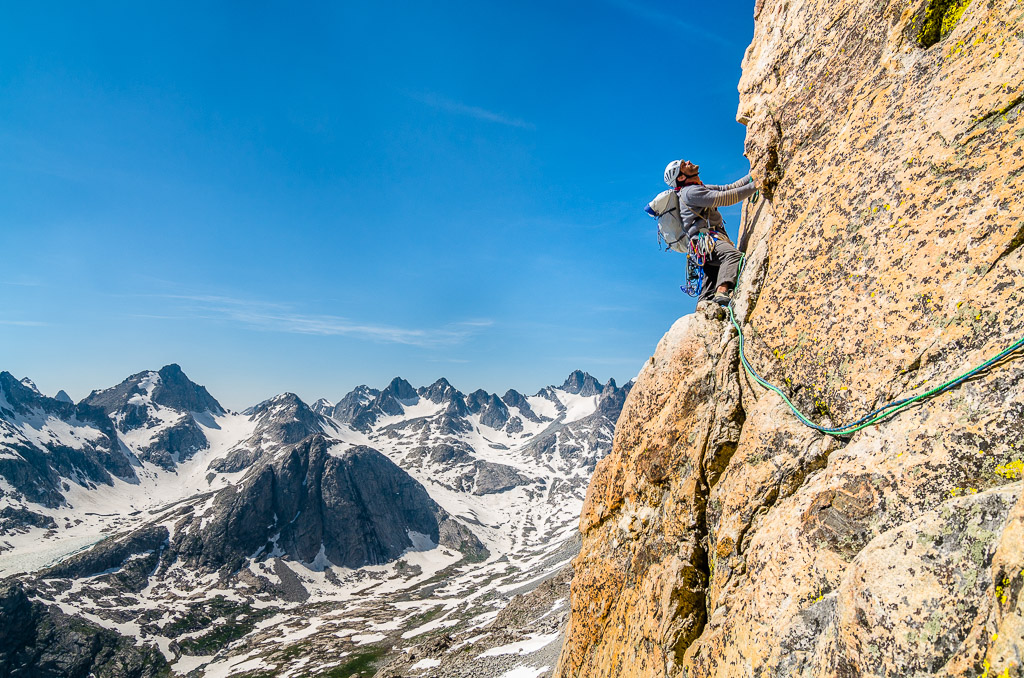The Wind River Project Documentary
Written by: Michelle Boise
3 minute read
February 17, 2017
In 2017, Beyond Type 1 gifted a grant to assist in the completion of The Wind River Project documentary. The Wind River Project was screened at the Flagstaff Mountain Film Festival, which focuses on cultural and outdoor-adventure documentary films.
The Wind River Project documentary is an 11-minute short film following three climbers with type 1 diabetes (T1D) as they ascend the remote Titcomb Basin in the Wind River Range of Wyoming. The climbers—Matt Spohn, Steve Richert and Blake McCord—were brought together through two special things they have in common: a love for hiking and photography and a T1D diagnosis in childhood.
Diabetes in the wild
The documentary portrayed their struggles and triumphs during the 1500-foot ascent in the Wind River Range, all of which were magnified by having T1D and the many extra considerations forced to be taken during the climb.
“None of us have really climbed with others who have type 1, certainly not in a team of all diabetics,” says Blake McCord, climber and director of The Wind River Project. “In some ways it was nice, because we intimately understood what each of us was dealing with. You share that struggle.”
McCord and his fellow climbers Spohn and Richert wanted to highlight the added challenges of living with type 1 to educate moviegoers about this auto-immune disease as well as to be a source of inspiration for anyone who has faced challenges and obstacles that might have appeared insurmountable.
Inspiration behind the project
“We had our own personal desires for gain and wanted to test ourselves with the climb,” says McCord. “The other intent was to do something inspiring to other people living with diabetes—to break down those perceived barriers of what you can or can’t do because of the disease.”
McCord shared that living with type 1 diabetes never made him feel limited but rather required more preparations.
“You have to be so much more prepared. If we get caught and have to spend the night on the wall—it can be dangerous. If you have type 1, it’s a lot more serious. We have to evaluate that risk and decide whether or not to push on” McCord explained.

Preparing for the climb
McCord shared that the climbers typically packed just enough food for the day’s climb, but did not want to get stuck up there without sufficient food to treat a low blood sugar. Unexpected storms can blow in and halt climbing, causing an overnight stay on the mountain. “You don’t want to come down in the dark,” McCord said.
Luckily in the film, the climbers didn’t have to spend the night hanging off a cliff, however, they did face unexpected challenges and due to these, had to change their itinerary.
The initial climb was a first-ascent attempt at the Titcomb Basin, which is difficult to reach and mostly untouched. The team had much of their gear transported by horse, a service they paid for to get their equipment into the first 12 miles of backcountry. The horses had to stop because of deep snow banks, so the final 4 miles were done on foot.
“In a trip like this, there’s all the risks that are associated with diabetes—high and low blood sugars—and that’s somewhat compounded by the fact that you’re out in the backcountry with limited access to help. You have to be selective about what you take,” said McCord. “Then there’s the risks of climbing—lose rock, slipping, or getting hit by falling rock.”
From the ground, the crew couldn’t see that the terrain was in fact crumbly and near impossible to climb until the second pitch (400-500 feet up). “When it breaks apart easily,” McCord said, “you can’t put your cams in.”
Cams are the essential mountaineering protection equipment that spring-loads and fixes into crevasses of the rock. Without them, they could fall to their death. At approximately every 200 feet, a “pitch” is made and an anchor secured.
“The person on the ground feeds out rope, and out of the rope you build the anchor, so the person below can come up,” McCord explained. “It’s like leap frogging your way up.”
Documenting their triumph
They may not have finished the first ascent, but the team’s second climb in the Wind River Range was a whopping 1500 feet. The documentary followed the struggle and triumph of the squad while also taking an intimate look at what it’s like to live with T1D.
Apart from sharing the struggles associated with T1D, the three climbers shared the belief that the chronic illness shouldn’t hold you back from chasing your dreams and exploring the world. There were no current plans set for another climb, but as McCord said, “We’re always looking for the next ascent.”


Author
Michelle Boise
Michelle has a BA in English literature and Spanish and a MFA in writing from the University of San Francisco. As a writer, editor and content guru, she's worked on both literary magazines and e-commerce platforms. Before joining the Beyond Type 1 team, she developed health-conscious articles for Fitbit. When she's not writing, you can find her cooking or painting with acrylics (they dry faster). She is fond of wearing red shoes, it makes her feel snappy.
Related Resources

If you have diabetes, you know insulin affects low blood sugar (hypoglycemia), but it’s not...
Read more

Living with diabetes, you know that low blood sugar can be dangerous and needs quick...
Read more

At just 17, Collin Lloyd is making a name for himself in karting—on and off...
Read more

